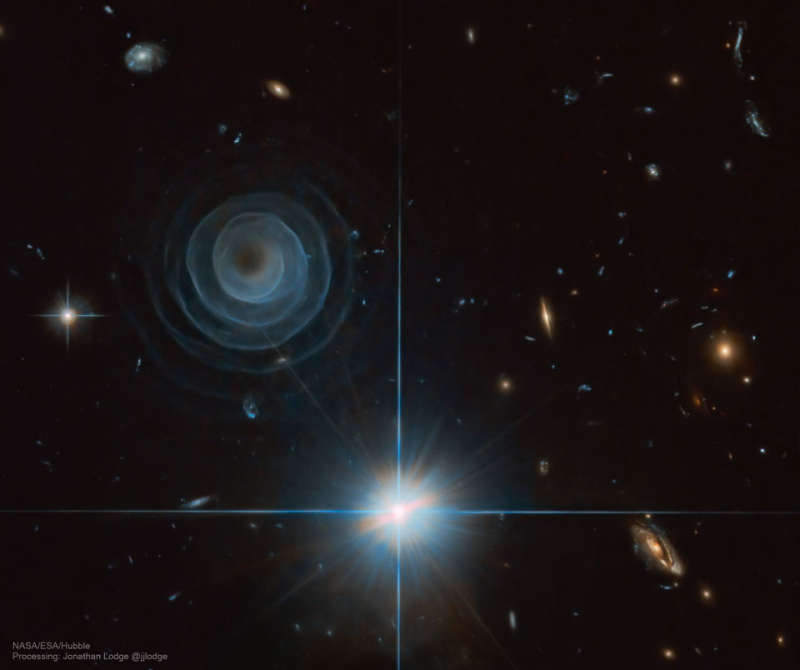
|
Credit & Copyright: Jonathan Lodge
Explanation:
What created the strange spiral structure on the upper left?
No one is sure, although it is likely related to a star in a
binary star system entering the
planetary nebula phase, when its outer atmosphere is ejected.
The huge spiral spans about a third of a
light year across and, winding four or five
complete turns, has a regularity that is without precedent.
Given the expansion rate of the
spiral gas,
a new layer must appear about every 800 years,
a close match to the time it takes for the two stars to orbit each other.
The star system that created it is most commonly known as
LL Pegasi,
but also AFGL 3068 and IRAS 23166+1655.
The featured image was taken in near-infrared light by the
Hubble Space Telescope.
Why the spiral glows is
itself a mystery, with a leading hypothesis being
illumination by light reflected from nearby stars.
|
January February March April May June July August September October November December |
| ||||||||||||||||||||||||||||||||||||||||||||||||
NASA Web Site Statements, Warnings, and Disclaimers
NASA Official: Jay Norris. Specific rights apply.
A service of: LHEA at NASA / GSFC
& Michigan Tech. U.
Based on Astronomy Picture
Of the Day
Publications with keywords: planetary nebula
Publications with words: planetary nebula
See also:
- APOD: 2025 August 31 Á NGC 7027: The Pillow Planetary Nebula
- APOD: 2025 August 22 Á A Tale of Two Nebulae
- APOD: 2025 August 5 Á NGC 6072: A Complex Planetary Nebula from Webb
- APOD: 2025 July 29 Á A Helix Nebula Deep Field
- APOD: 2025 July 13 Á Planetary Nebula Mz3: The Ant Nebula
- APOD: 2025 June 9 Á Between Scylla and Charybdis: A Double Cosmic Discovery
- APOD: 2025 May 14 Á NGC 1360: The Robins Egg Nebula
